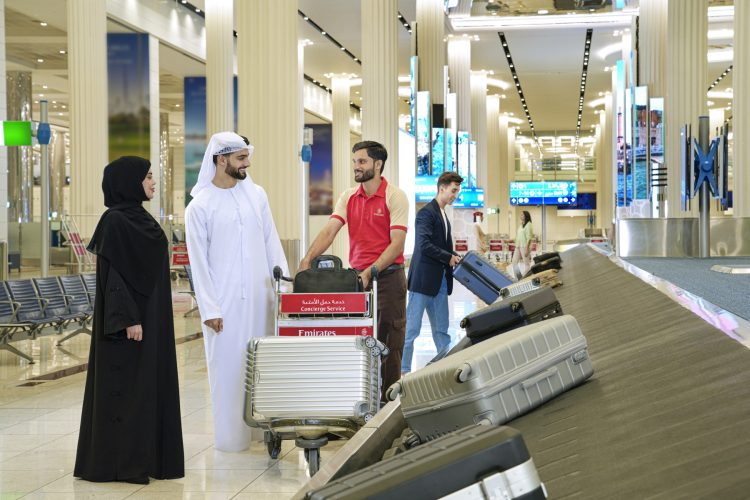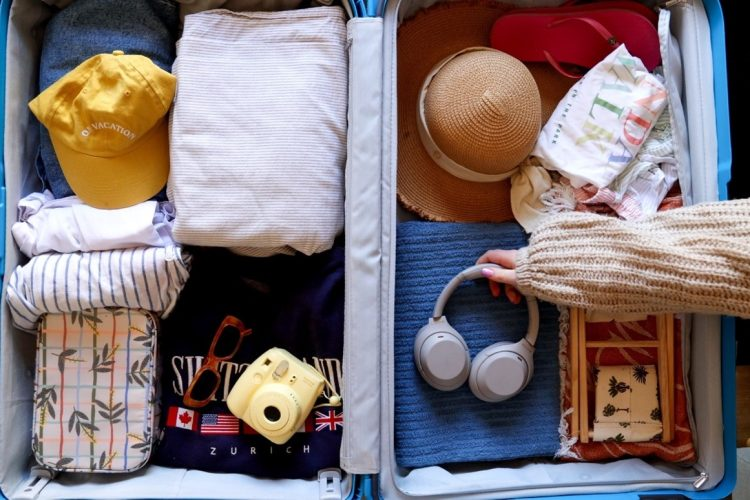Defining Mishandled Baggage: The industry classifies mishandled baggage as any checked bag that fails to arrive on time at its owner’s destination. This typically includes luggage that is delayed beyond the flight’s arrival, lost, damaged or otherwise misrouted during transit (internationalairportreview.com)(radicalstorage.com). Airlines and airports report a mishandling rate per 1,000 passengers carried (often phrased “per 1,000 uplifted”). In practice, this means that if an airline boards one million passengers and mishandles 7,600 bags, its rate is 7.6 per 1,000. Leading carriers aim for single-digit rates: for example, Emirates’ Dubai hub achieved only 1.4 per 1,000 (internationalairportreview.com), whereas industry-wide rates have historically been higher.
Pandemic Impact and Volume Trends: The COVID-19 crisis caused an unprecedented collapse in air traffic in 2020, then a sharp rebound in the following years. Global passenger numbers fell from about 4.5 billion in 2019 to roughly 1–2 billion in 2020–21, then climbed to 3.42 billion in 2022 (sita.aero) and about 5.2 billion in 2023 (internationalairportreview.com). Baggage volumes tracked roughly in step, and mishandling rates moved dramatically as a result. In the United States, DOT figures show the rate plunged to ~4.1 per 1,000 in 2020 (likely aided by reduced flights) but then surged to 6.4 in 2022 before easing to 5.8 in 2023 (radicalstorage.com). Worldwide, industry data reported a mishandling rate of 7.6 per 1,000 passengers in 2022 (iata.org) as traffic boomed, then an improved 6.9 per 1,000 in 2023 even though volumes exceeded pre-pandemic levels (internationalairportreview.com). These figures (summarized below) illustrate the V-shaped disruption in 2020–21 and the pressure on baggage systems as travel rebounded:
| Year | Global Passengers (billions) | Mishandled bags per 1,000 pax |
|---|---|---|
| 2022 | 3.42 (sita.aero) | 7.6 (iata.org) |
| 2023 | 5.2 (internationalairportreview.com) | 6.9 (internationalairportreview.com) |
Regional and Airline Comparisons: There are stark regional differences in baggage performance. In Asia-Pacific – home to some of the world’s most efficient hubs – mishandling rates have been consistently low (around 3.0 per 1,000 in 2023 (internationalairportreview.com). North American carriers report moderate rates (about 5.8 per 1,000 in 2023 (internationalairportreview.com), reflecting improvements after pandemic staffing issues. Europe still lags, with roughly 10.6 per 1,000 in 2023 (internationalairportreview.com), in part due to dense networks and slower tech adoption. Among airlines, performance varies widely. For example, U.S. data show Allegiant Air at a very low 1.9 per 1,000 (fewest mishandled) and American Airlines at 8.2 per 1,000 (highest among big carriers) in 2023 (radicalstorage.com). Globally, Emirates stands out: by investing in automation and RFID tracking, it reports a 99.9% on-time delivery rate – just 1.4 mishandled bags per 1,000 (internationalairportreview.com), roughly ten times better than the industry average. Other major carriers (Lufthansa, Singapore, Air France, etc.) generally post low single-digit rates, while budget airlines and complex transfer hubs tend toward higher rates.
| Airline | Mishandled bags per 1,000 pax (latest) |
|---|---|
| Emirates (Dubai) | 1.4 (internationalairportreview.com) |
| Allegiant Air (USA) | 1.9 (radicalstorage.com) |
| American Airlines (USA) | 8.2 (radicalstorage.com) |
| Industry avg. (global) | 6.9 (2023) (internationalairportreview.com) |

Luggage carousel at Dubai International Airport. Emirates (seen with Emirates luggage carts) has achieved a 99.9% baggage-handling success rate by modernizing systems and tracking technology (internationalairportreview.com).
Major airports share the burden: many now collaborate closely with airlines. For example, Dubai International – jointly managed by Emirates, dnata and Dubai Airports – maintains state-of-the-art sorters and scanners, helping realize the airline’s 99.9% success (internationalairportreview.com). IATA’s surveys show that around 75% of “mega” airports and 85% of “major” airports worldwide are equipped for full bag tracking (per Resolution 753) (iata.org). These hubs often deploy RFID tags, high-speed conveyors and real-time tracking. Indeed, RFID has spread to about 27% of airports overall (but 54% of mega-hubs) (iata.org), reflecting how the largest airports lead in baggage tech adoption.
Causes of Mishandling: Analyses consistently point to connecting flights as the biggest culprit. Nearly half of mishandled baggage occurs when bags are in transit between flights (radicalstorage.com). In 2023 transfer errors accounted for ~46% of mishandles (42% in 2022) (radicalstorage.com), as tight connections and airline schedule changes leave bags behind. Other common causes include:
- Sorting and Tagging Errors: Human mistakes at check-in or loading (wrong tags, mis-sorted conveyor chutes) can send bags off-course.
- Equipment or Process Failures: Breakdowns of conveyor belts, scanners or baggage systems at crowded airports cause delays.
- Operational Irregularities: Flight cancellations, gate changes, security holdups or staffing shortages can strand luggage.
All told, transfer mishaps and these errors combined pushed mishandling rates up in early 2022, when global travel resurged faster than the baggage workforce (radicalstorage.com). (By contrast, in slow 2020, lower traffic helped drive mishandling rates to record lows (radicalstorage.com.)
Technology, Automation and Policies: The industry is aggressively investing in solutions. IATA’s Resolution 753 – mandating bag tracking at acceptance, loading, transfer and delivery – is a key driver. By mid-2024, 44% of airlines had fully implemented 753 tracking (and 41% were in progress) (iata.org). On the airport side, this mandate has spurred equipment upgrades: major hubs cite scanning each bag on every flight leg, with 73% still using barcode optical readers and 27% using RFID (iata.org). To overcome legacy IT, IATA is also spearheading a move from old “Type B” messaging to modern, XML-based baggage messaging (iata.org), which should improve data quality and reduce misconnects.
Airlines and airports are also automating processes. Self-service bag drops are now commonplace: two-thirds of airlines and 85% of airports offer unassisted bag drop kiosks (internationalairportreview.com), reducing queues and human errors. Passenger-facing tools have grown as well – for example, Emirates’ new “Bag Connect” platform gives end-to-end tracking on a smartphone (internationalairportreview.com). Industry leaders emphasize that data analytics and AI are coming to baggage operations. SITA’s CEO notes that computer-vision sorting and AI decision-support can significantly cut mishandling (internationalairportreview.com). In summary, the post-pandemic era has seen airlines and airports double down on technology: investments in RFID, automation, real-time messaging and passenger visibility are all contributing to the steady long-term decline in mishandled bags.
Outlook: After the turbulence of 2020–22, the downward trend appears to be resuming. Industry surveys show passenger confidence is rising as mishandling rates fall again – 2023’s 6.9 per 1,000 is the lowest since before COVID (internationalairportreview.com). Moving forward, continued digitalization (end-to-end tracking, AI, robotics) and collaborative programs between carriers and airports are expected to push rates even lower. As one analyst put it, visibility and automation are “the way forward” – and both sides of the terminal (airlines and airports) are aligning their efforts accordingly (internationalairportreview.com)(iata.org).


